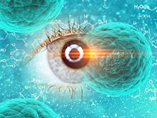


In many ways, regeneration is the ‘holy grail’ of medical research. To be able to completely heal from injuries and to regrow lost organs or tissues is a feat that most mammals are generally not capable of. However, many types of animals can regenerate to varying degrees, and some mammalian tissues do normally display regenerative capabilities. Studying model organisms has provided some insight into the biochemical pathways that allow regeneration in certain systems, as well as mechanisms that prevent regeneration in others. Here are a couple of recent studies which could represent major breakthroughs in regeneration research.
In adult mammals, the retina is almost completely incapable of regeneration. In contrast, bony fish can regenerate retinal tissue lost due to injury. The process of retinal regeneration in fish requires the generation of new neurons from Müller glial cells within the eye, driven by the activity of the proneural transcription factor Ascl1. Based on this, researchers discovered that expression of an Ascl1 transgene in mouse Müller glia induces neurogenesis and facilitates retinal regeneration in young mice. But, disappointingly, this regenerative ability is lost in mice older than 16 days 1. Jorstad et al. have now shown that a chromatin state change is the cause of the inability of Ascl1 to facilitate retinal regeneration in adult mice 2. In a recent Nature paper, they demonstrate that treatment with a histone deacetylase inhibitor along with forced expression of Ascl1 in Müller glia enables adult mice to regenerate retinal tissue after an injury. This finding may have profound implications for treating human retinal damage.
In healthy mammalian brains, the myelin sheaths surrounding neurons can regenerate after injury and inflammation. This process involves new oligodendrocytes differentiating from progenitor cells in the damaged tissue. However, in people with multiple sclerosis (MS), myelin regeneration often fails due to a reduction in oligodendrocyte differentiation. In a new paper, Dombrowski et al. show that regulatory T cells (Treg), a specialized T cell subset, promote remyelination by stimulating oligodendrocyte differentiation 3. Using a transgenic model for Treg ablation, they showed that without Tregs, remyelination is severely impaired, like some MS models. They also identified CCN3 as a Treg -secreted factor which mediates oligodendrocyte differentiation. This study potentially provides groundwork for future treatments of demyelinating diseases such as MS, and also contributes to a growing understand of Treg functions in cell differentiation and tissue repair 4-7.
Cyagen Biosciences is the world's largest provider of custom-made mouse and rat models. From transgenic animals, to knockins, to CRISPR/Cas9-mediated genome editing, Cyagen offers a one-stop solution for all your custom rodent model needs. Cyagen also offers a comprehensive series of stem cell products including cell lines and media, and our award-winning VectorBuilder platform can provide you with custom vectors for all your research needs.




영업일 기준 1-2일 내에 답변해 드리겠습니다.